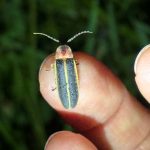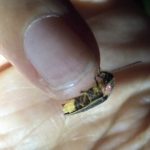Notice: Below is a list of 0 important links included on this page.
Please note that while screen readers have made significant strides, they may still lack full support for optimal web accessibility.




You must be logged in to post a comment.
This is a project of the Xerces Society, working in collaboration with the IUCN SSC Firefly Specialist Group and New Mexico BioPark Society.
Copyright © 2025 The Xerces Society •1631 NE Broadway Street, #821 • Portland OR 97232 USA
Thanks for submitting this observation and accompanying survey data! Both the appearance of the firefly in the photo (yellow edging on the segment in front of the lanterns; pale scutellum) and the description of the flash behavior align with Photinus pyralis.